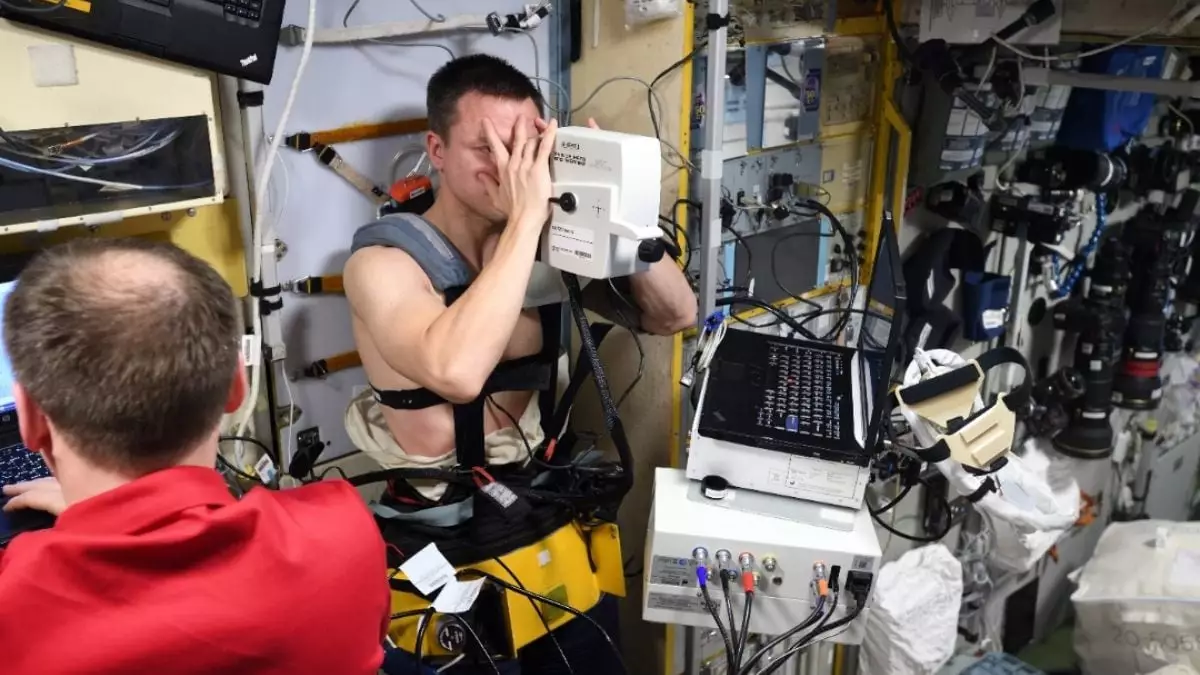Extended missions aboard the International Space Station (ISS) have revealed unsettling insights into the impact of microgravity on human health, particularly concerning vision. A staggering 70 percent of astronauts who have lived in microgravity for six to twelve months experience significant alterations in their eyesight. This alarming statistic raises red flags for future deep-space endeavors, as these vision changes can impede the effectiveness and safety of astronauts on long-duration missions, including those aimed at exploring Mars.
The symptoms of spaceflight-associated neuro-ocular syndrome (SANS) are distressingly complex. Astronauts report issues such as swelling of the optic nerve and changes in the eye’s structure, leading to vision impairment. The underpinning cause of these changes appears to be the redistribution of bodily fluids in a microgravity environment. This fluid shift increases pressure within the ocular structures, thereby leading to the aforementioned complications. Notably, while many astronauts regain their vision after returning to Earth, the long-term effects are still poorly understood, amplifying the urgency for further research into the phenomenon.
Research conducted by Santiago Costantino and his team at the Université de Montréal offers critical insights into the ocular changes experienced by astronauts. Their study involved 13 astronauts from various nations—including the United States, Japan, and Canada—who spent five to six months aboard the ISS. Through meticulous eye examinations, the researchers documented a worrying decline in ocular rigidity by 33 percent, along with an 11 percent drop in intraocular pressure and a 25 percent reduction in ocular pulse amplitude. Additionally, an increase in choroidal thickness was reported in some subjects, highlighting the multifaceted nature of SANS.
SANS has been recognized since the early 2000s, with previous observations made by Russian cosmonauts aboard the Mir space station. Although NASA designated the condition as a formal diagnosis in 2011, the scientific community continues to grapple with the precise mechanisms at play, leaving many questions unanswered.
In response to these alarming findings, researchers are investigating various countermeasures designed to protect astronauts’ ocular health. Potential solutions include negative pressure devices, pharmaceutical interventions, and targeted nutrition plans. These measures aim to alleviate the risks associated with fluid shifts in microgravity. Additionally, ongoing investigations seek to identify astronauts who may be predisposed to developing severe ocular conditions, thereby enabling early interventions.
Costantino’s team has proposed that changes in the mechanical properties of the eye could potentially serve as biomarkers for SANS, offering a path toward early detection and preemptive action. As the quest for deep-space exploration continues to advance, space agencies are prioritizing astronaut health and vision preservation, thereby ensuring that future missions are not only ambitious but also safe for crews venturing far beyond our planet.
Understanding and addressing the complexities of SANS will be critical for the success of human exploration endeavors into the depths of our solar system.



Leave a Reply